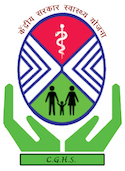Premenstrual syndrome is a combination of physical, emotional and psychological disturbances that a female of reproductive age experiences 1 to 2 weeks before the onset of menstrual flow. PMS symptoms and signs vary from female to female.
Facts about Premenstrual Syndrome
- About three in every four menstruating female experience some form of PMS at some point in their life.
- PMS can start as early as within a year after menarche (first menstrual period). However, it is more common in females in their 30’s.
- Symptoms of PMS vary from slightly noticeable to intense.
- The symptoms tend to occur in a predictable pattern.
- The signs and symptoms of PMS is more intense 2 or 3 days before the onset of regular periods.
- The cause behind premenstrual syndrome is not known, but it may be related to the interaction between brain chemicals or neurotransmitters and sex hormones.
- It is imperative to distinguish PMS from similar early pregnancy symptoms. The best way is to get a pregnancy test.
- It is better to maintain a menstrual diary and note any physical or psychological changes experienced from 1-2 weeks before the onset of periods.
- The severe form of PMS is termed as a premenstrual dysmorphic disorder. The symptoms of PMDD is so intense that it interferes with daily life.
- A female who has hysterectomy may also experience the PMS if one ovary is remaining.
- PMS and PMDD or are not the same. Female may suffer from one, or both the conditions may occur together.
- PMS may worsen specific health issues such as allergy, migraine and asthma.
- A diet high in salt, caffeine or alcohol make the symptoms of PMS worse.
Symptoms of Premenstrual Syndrome
An average women menstrual cycle is of 28 days.
Ovulation is the day of the cycle when an egg is released from the ovary. It mostly occurs on the 14th day of the cycle. In most of the cases, if pregnancy does not take place, bleeding occurs on the 28th day.
Premenstrual syndrome begins around after 14th day. The duration of PMS also varies from female to female.
Most of the females experience the symptoms of PMS one or two weeks prior to the onset of menstruation. Some women may have PMS for a longer time. Some have a shorter time.
PMS usually disappears with the onset of periods, but in some, it takes 3-4 days after the start of periods to go.
In most of the cases, the symptoms of PMS are mild or moderate. More than 80% of female reports just one or more symptoms that are not severe to substantially affect their daily life. However, about 30% of females across the globe reports moderate-to-severe premenstrual symptoms that affect their daily function. About 3-8 percent of females reports PMDD.
The Physical Symptoms of PMS include:
- Abdominal pain
- Abdominal bloating
- Sore and tender breasts
- Headache
- Food cravings, especially for sweets
- Overeating
- Acne
- Musculoskeletal pain
- Weight gain
- Bloating due to the retention of fluids.
- Constipation
- Diarrhoea
- Headaches
- Sensitivity to light or sound
- Fatigue
Psychological Symptoms of Premenstrual Syndrome:
- Irritability
- Oversensitivity
- Changes in sleep patterns, i.e. too much sleeping or insomnia
- Anxiety
- Depression
- Anger
- Crying
- Sadness
- Tension
- Exaggerated mood swings
- Emotional outbursts
The severity of symptoms not only differs from female to female but may also change by month, even in the same female.
If mood swings, physical pain and other symptoms of PMS starts affecting your daily life or do not go away even after seven days of onset of periods, it is better to consult a doctor.
A tiny percentage of female suffer from PMDD
Symptoms of PMDD include:
- Depression
- Thoughts of suicide
- Panic attacks
- Extreme anxiety
- Anger with severe mood swings
- Crying spells
- A lack of interest in daily activities
- Insomnia
- Trouble thinking or focusing
- Binge eating
- Painful cramping
- Bloating
Causes Premenstrual Syndrome
The exact cause of premenstrual syndrome is not clear, but several factors may contribute to this condition.
- Cyclic changes in the level of hormones – The signs and symptoms of premenstrual syndrome changes with the hormonal fluctuations that a female experiences during her reproductive years. Symptoms of PMS disappear with pregnancy and menopause.
- Depression –Depression is diagnosed in many females suffering from PMS.
- Chemical changes in the brain – Serotonin is a brain chemical that plays a vital role in mood states. Fluctuations in the level of serotonin trigger PMS symptoms. Insufficient amount of serotonin leads to fatigue, sleep issues, food cravings as well as contributes to premenstrual depression.
Females at risk of premenstrual syndrome are:
- History of mood disorder depression such as bipolar disorder for postpartum depression.
- A family history of depression family history of PMS
- Substance abuse
- Domestic violence
- Emotional trauma
- Physical trauma
Some other conditions associated with PMS are:
- Major Depressive disorder
- Dysmenorrhea
- Seasonal affective disorder
- Generalized anxiety disorder
- Schizophrenia
How PMS Occurs
Research links premenstrual syndrome with a change in the level of serotonin and sex hormones at the beginning of the menstrual cycle. The level of progesterone and oestrogen hormone changes during certain times in the monthly cycle. During the luteal phase, the hormones from the ovary thicken the lining of the uterus to prepare it for implantation in case the egg is fertilized. At this time, the level of hormone progesterone increases in the body, while the level of hormone, oestrogen, begins to decrease. The shift from oestrogen to progesterone may cause some of the symptoms of PMS.
After ovulation, if the female is not pregnant, the level of progesterone the hormones begin to fall dramatically. This leads to anxiety, irritability and mood swings. Besides, ovary steroids modulate activity in the area of our brain associated with premenstrual symptoms.
Hormonal cycling affects the serotonin level that regulates mood and pain. Compared to women who do not have PMS, females who experience PMS have lower levels of serotonin in their brains before their periods.
After the onset of periods, the level of both progesterone and oestrogen starts rising again, and PMS symptoms go away.
Ayurveda considers menstruation as a detox process and provides a holistic approach to manage and prevent the symptoms at each stage of the cycle.













